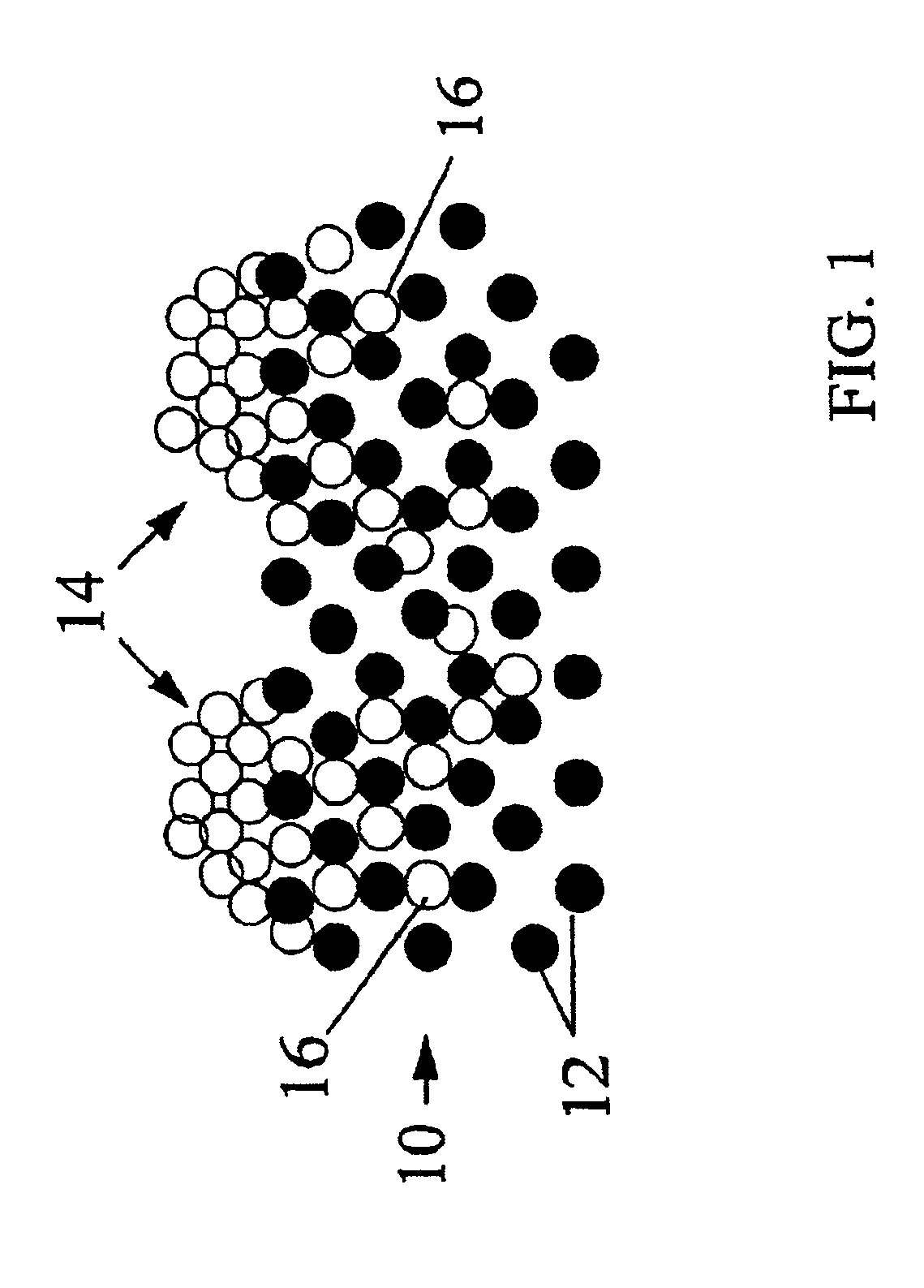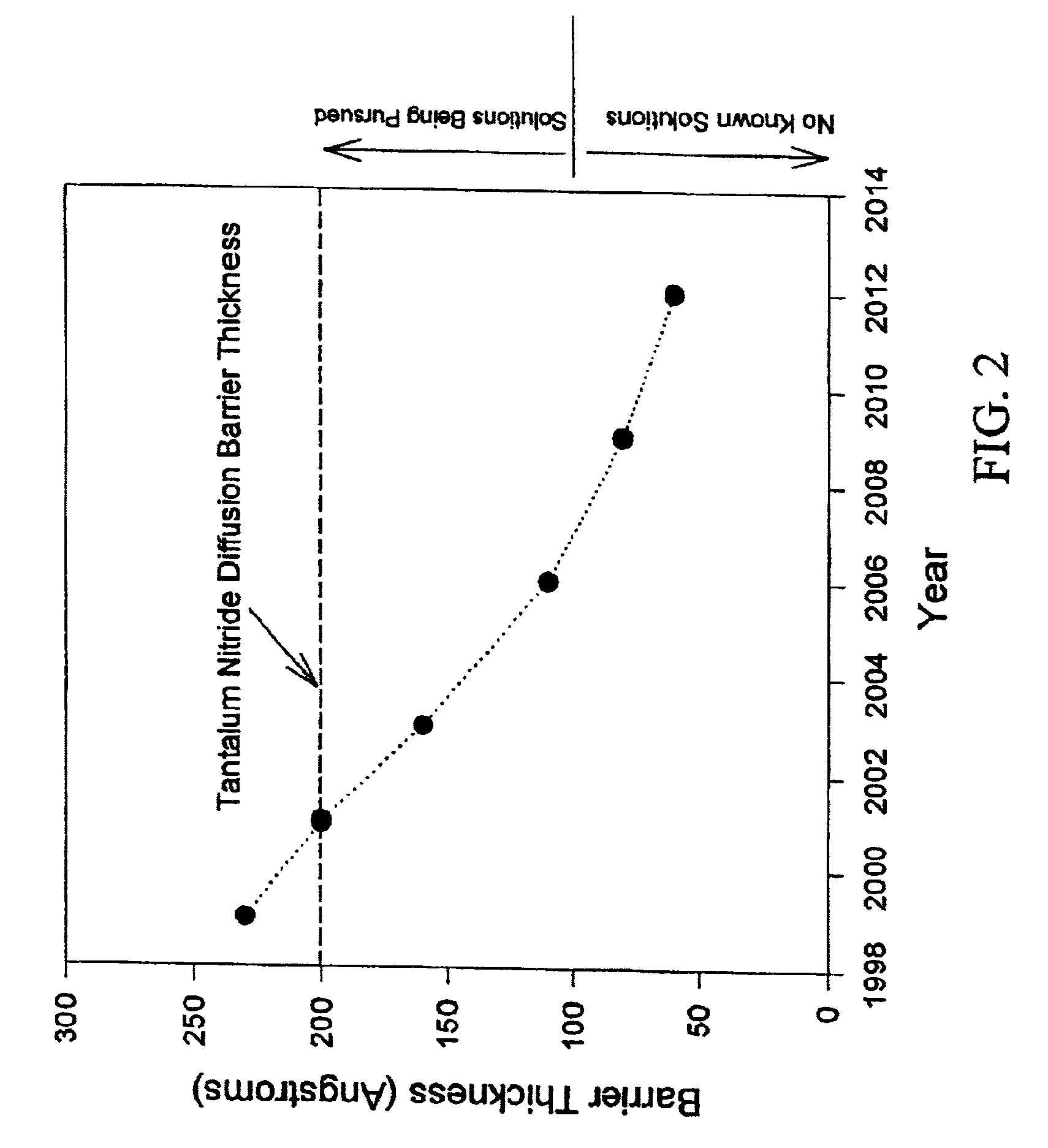Process for making electronic devices having a monolayer diffusion barrier
a technology of diffusion barrier and electronic device, which is applied in the direction of semiconductor devices, semiconductor/solid-state device details, electrical apparatus, etc., can solve the problems of ic element size having two detrimental effects on the resulting ic, limited electrical conductivity of aluminum and tungsten, and reducing the resistance characteristics of the resistor, etc., to achieve the effect of increasing the versatility of the invention, and reducing the resistance characteristics
- Summary
- Abstract
- Description
- Claims
- Application Information
AI Technical Summary
Benefits of technology
Problems solved by technology
Method used
Image
Examples
example 1
[0057]A barium / barium fluoride (Ba / BaF2) composite barrier film was grown on a silicon (100) wafer using molecular beam epitaxy (MBE), followed by formation of a single crystal metallic (elemental) copper layer on the metal halide (surface) portion of the barrier film. The films were grown inside a commercial MBE deposition chamber made by Vacuum Generators (model VG Semnicon V80H). The MBE system above has both Knudsen cells and e-beam sources for the barium fluoride, and a separate e-beam source inside the chamber for the copper, and a 30 kV RHEED system to monitor the film structure during film deposition. The substrate heater is capable of holding up to 3 inch (7.6 cm) diameter wafers and control the substrate temperature to within ±0.1° C. at 1000° C. and a maximum deviation of the temperature across the substrate of ±0.1° C. All temperature measurements are made from a noncontact thermocouple gauge, namely, an optical pyrometer having an accuracy of ±0.5° C.
[0058]A silicon (10...
example 2
[0068]A barium / barium fluoride (Ba / BaF2) composite barrier film also was grown on a single crystal gallium arsenide (001) wafer using molecular beam epitaxy (MBE), followed by formation of a single crystal metallic (elemental) copper layer on the metal halide (surface) portion of the barrier film.
[0069]To accomplish this, first, a barium fluoride film was deposited on the gallium arsenide substrate using the basic procedure described in U.S. Pat. No. 5,932,006 (see Example 1 therein) except that the (100) oriented single crystal GaAs substrate was replaced by a (001) oriented single crystal GaAs substrate for this example, which teachings are incorporated herein by reference.
[0070]Then, the procedure to grow a single crystal copper film on the BaF2 on gallium arsenide was conducted as follows. Once the barium fluoride deposition was completed the substrate temperature was lowered to 400° C. With a substrate temperature of 400° C., copper was deposited on the barium fluoride surface ...
PUM
| Property | Measurement | Unit |
|---|---|---|
| pressure | aaaaa | aaaaa |
| temperature | aaaaa | aaaaa |
| temperature | aaaaa | aaaaa |
Abstract
Description
Claims
Application Information
 Login to View More
Login to View More - R&D
- Intellectual Property
- Life Sciences
- Materials
- Tech Scout
- Unparalleled Data Quality
- Higher Quality Content
- 60% Fewer Hallucinations
Browse by: Latest US Patents, China's latest patents, Technical Efficacy Thesaurus, Application Domain, Technology Topic, Popular Technical Reports.
© 2025 PatSnap. All rights reserved.Legal|Privacy policy|Modern Slavery Act Transparency Statement|Sitemap|About US| Contact US: help@patsnap.com



